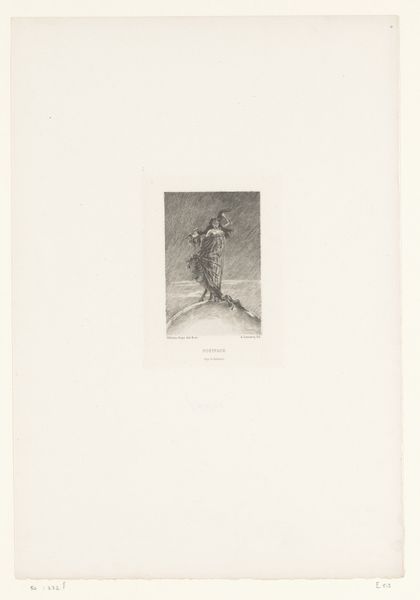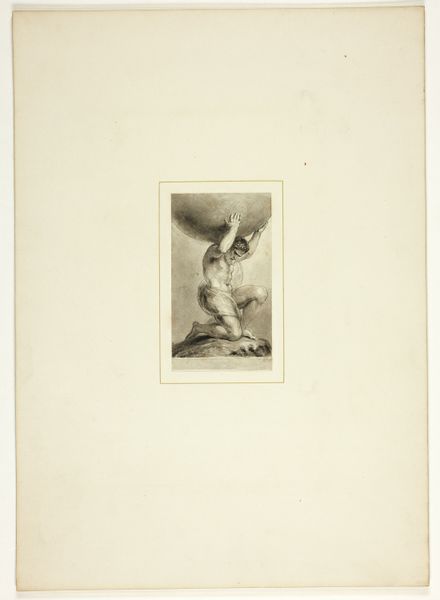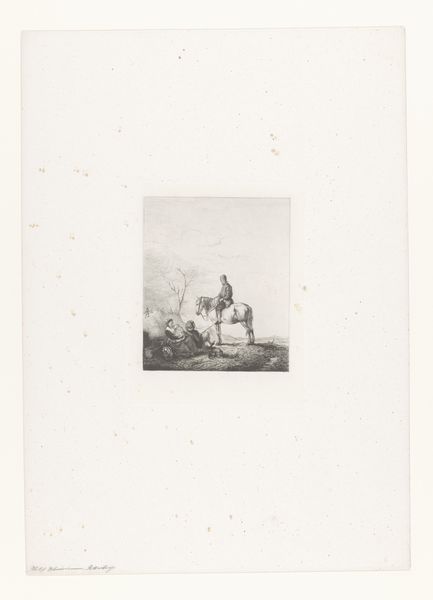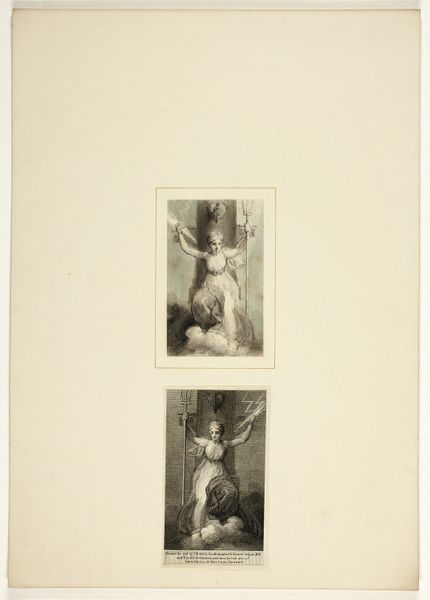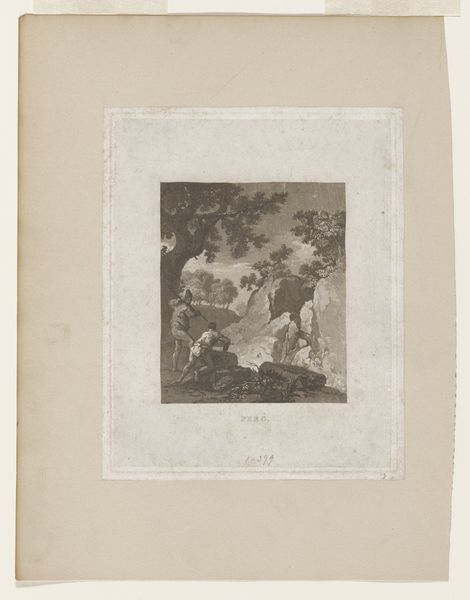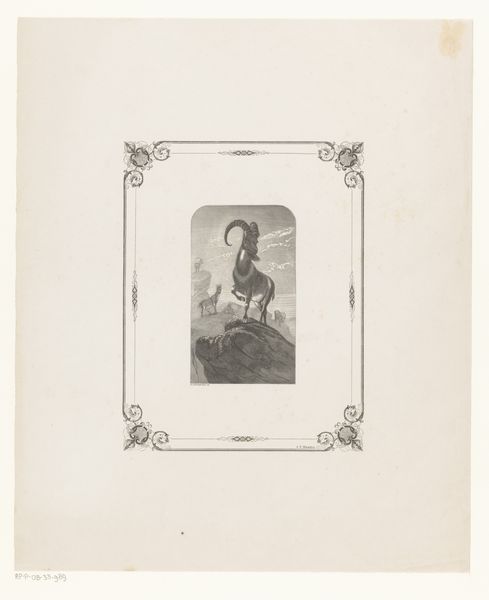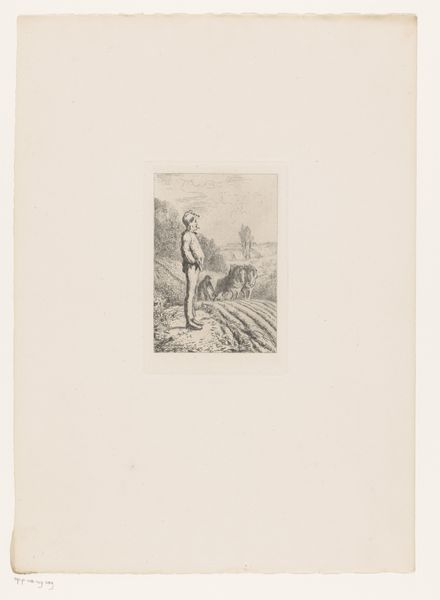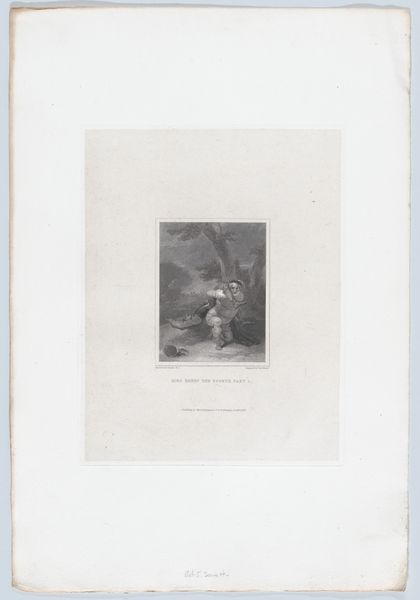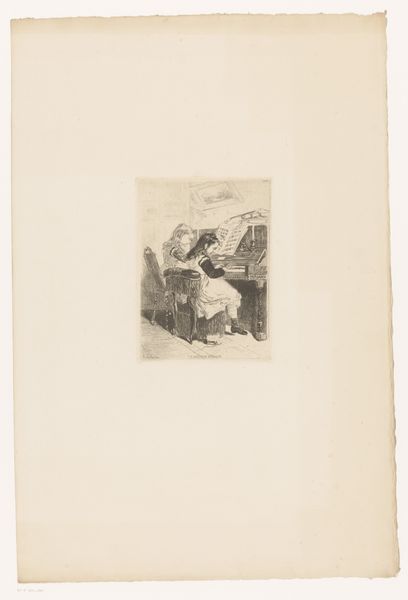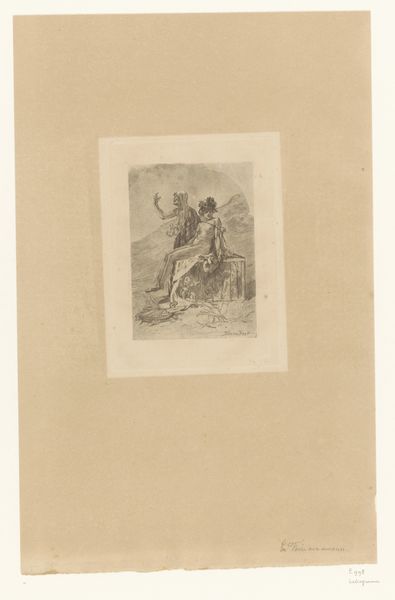
Portret van Allan M'Aulay uit A Legend of Montrose van Walter Scott 1824 - 1905
0:00
0:00
Dimensions: height 165 mm, width 120 mm
Copyright: Rijks Museum: Open Domain
Curator: Ah, let’s spend some time looking at this engraving. It's titled "Portret van Allan M'Aulay uit A Legend of Montrose van Walter Scott", a portrait of Allan M'Aulay from Walter Scott's "A Legend of Montrose", created sometime between 1824 and 1905 by Wilhelm Hesslöhl. What’s your first impression? Editor: Brooding. That's the first word that pops into my head. The fellow has a certain… Byronic intensity about him. Moody Scotsman staring out across a misty landscape? Sign me up. It’s dramatic, definitely capturing a Romantic spirit. Curator: Absolutely. You notice the Romantic spirit expressed through the materials of this print; line engraving democratized images. A relatively accessible artform, that brought depictions of romantic heroes into more homes and periodicals. Look closely at the process itself - the physical labor. Editor: True, you see it in all those hatched lines creating the shading, each one etched with effort. And I’m pulled in by that tight composition, cropped close on the figure, throwing all this… Scottishness in your face. The kilt, the sporran – it's practically a costume drama condensed onto a small piece of paper. But in a good way. Curator: Indeed! It emphasizes his identity as a character pulled from Scottish lore, marketed toward the middle classes. What stories did this image inspire through the proliferation of cheap print, mass production techniques making artworks available for far wider distribution. Editor: You make me think about how Scott was almost mythologizing Scotland for an English audience. Creating these slightly sensationalized figures. It almost reads like a promotional image for the book now you say that, trying to build the heroic myth of an edgy Scottish character that you are clearly meant to sympathise with... Curator: It raises questions about cultural consumption. How was Scotland represented? Was it authentic, or a carefully crafted export? And to what end? Romanticism here becomes another cog in industrial advancement by inspiring ideas of nationhood Editor: Very true. And even from a purely aesthetic perspective, I feel the weight of all those tiny lines contributing to a feeling of history, a story being etched into permanence, or what seems like permanence. It does that on a purely emotive, textural level too. Curator: Thank you. Looking closer at the lines, one can certainly read how labor shaped and shifted not only the cultural and historical consumption of "A Legend of Montrose", but the material experience of its consumers, making this artist both participant in and witness to this fascinating era.
Comments
No comments
Be the first to comment and join the conversation on the ultimate creative platform.

